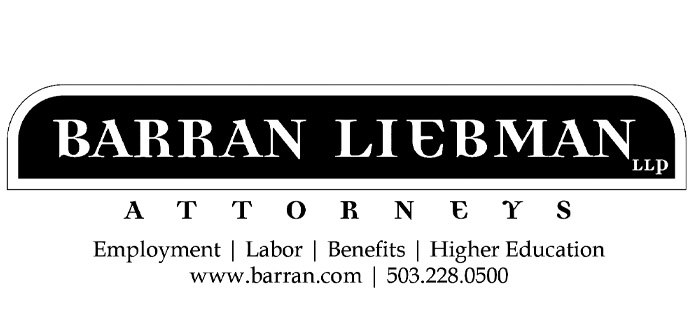Since 2019, Oregon employers have waited for guidance from the Oregon Employment Department (OED) that will govern Oregon’s Paid Family and Medical Leave Insurance program (PFMLI) — recently rebranded by the OED as Paid Leave Oregon.
Paid Leave Oregon is a family, medical, and sick leave insurance program that was created to provide eligible individuals compensated time off from work for qualifying purposes. The program is funded by employer and employee contributions to the PFMLI Fund. When the program launches in January 2023, employees and employers must contribute 0.4 percent and 0.6 percent of employee wages, respectively, up to a maximum of $132,900 in wages.
However, not all Oregon employers are required to contribute. In fact, the contribution requirement applies only to employers with 25 or more employees. “Small employers,” that is, employers with fewer than 25 employees, may contribute if they choose to do so.
For purposes of the program, an employer’s size is based on the “employee count”: the sum of the number of employees with wages subject to PFMLI contribution and the number of out-of-state employees. The employee count does not include any employees hired temporarily to replace eligible employees during periods of PFMLI leave. Depending on whether employers file taxes on a quarterly or annual basis, employee counts will be based on either the first Oregon Quarterly Tax Report of 2023, or the 2023 Oregon Annual Report.
So, what if you are a small employer?
Well, you have a choice. You may either: (1) not contribute to the PFMLI Fund; or (2) choose to contribute, and gain eligibility to apply for an assistance grant.
If an employee of a small employer who voluntarily contributes to the PFMLI Fund takes paid leave, that small employer may apply for an assistance grant to help cover either the cost of hiring a temporary replacement worker, or significant additional wage-related costs (SAWCs) incurred as a result of an employee’s PFMLI leave. SAWCs may include (1) paying additional wages to an existing employee; (2) outsourcing costs; (3) certification; (4) equipment purchases; (5) training costs; or (6) other costs that the OED, in its discretion, determines are appropriate.
A small employer that hires a replacement worker may receive a grant of $3,000. A small employer that incurs SAWCs due to an employee’s use of leave may receive a grant up to $1,000. An employer who initially applied for a grant related to SAWCs, but later learns the employee is taking an extended period of leave beyond the initial expected period of leave and, as a result, hires a replacement worker, may apply to receive the difference between the amount already received and $3,000.
You may be eligible for an assistance grant if:
- The eligible employee takes approved leave under the program for a period of seven or more working days;
- You were a small employer at the time the employee started a period of approved leave;
- You complete the application and provide documentation within the requisite time period;
- You commit to contribute to the PFMLI Fund for at least eight consecutive calendar quarters, starting with the first calendar quarter after the date the most recent assistance grant is approved;
- You do not have any delinquent reports or contributions, and have no unpaid penalties or interest related to the program; and
- You have not already applied for ten grants in the past year.
To contribute or not to contribute?
To determine whether contribution makes sense for you, consider the following:
- The Cost: Now that we know the contribution rate for 2023, you can begin to calculate what your employer contribution may be and determine whether that is a cost that you can take on.
- Your Workforce: Consider how many employees you currently have and whether they are, or could be, cross-trained to alleviate the potential burden of one or multiple employees taking leave at the same time. Note that, even if you do not contribute, eligible employees are entitled to protected time off, but you would not be eligible to apply for a grant to offset the impact of their absence.
- Your Business: Consider whether you could meet customer or client needs with a temporarily reduced workforce, or whether hiring temporary workers is a viable option for your business.
- Your Workplace Culture: Consider whether Paid Leave Oregon aligns with the culture and values of your workplace. Perhaps you already offer a form of paid leave and contributing to the state-administered program is more advantageous than administering a program internally, or perhaps the mission and values of your business align with you contributing financially to the program.
- The Administrative Burden: Consider whether your estimated contribution and potential receipt of grant dollars is worth the potential administrative burden.
Given the novelty of the program, it remains unclear how many assistance grant applications the OED will approve. While the assistance grant concept offers small employers a “carrot” for contributing to the program, receipt of those grant dollars is not guaranteed. As a result, a small employer’s decision to contribute requires an individualized analysis of their business and the potential financial impact.
Stacie Damazo is an attorney at Barran Liebman LLP, where she represents employers in employment advice and litigation matters. For questions about Paid Leave Oregon or other matters, contact her at 503-276-2121 or sdamazo@barran.com.





